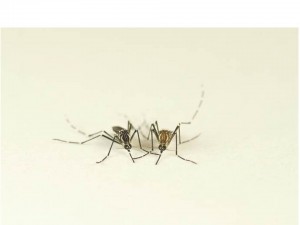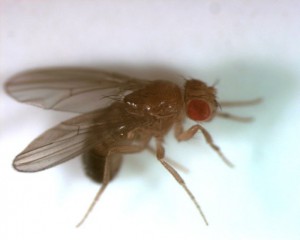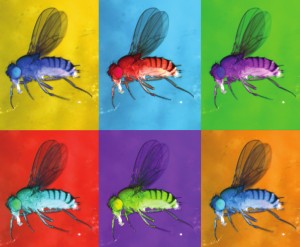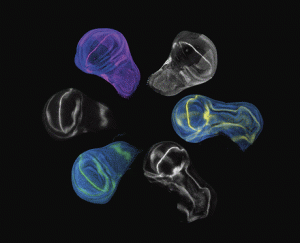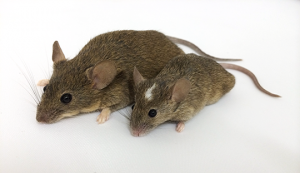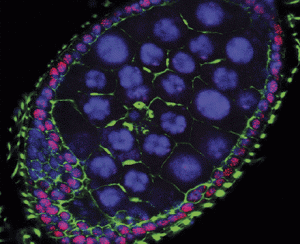Enter your address to receive notifications about new posts to your email.
Science & Publishing
-
Science & Publishing
New in G3: sequencing in schizophrenia, fine-mapping in wheat, and cloning in C. elegans
Check out the November issue of G3! Investigations Genes with Restricted Introgression in a Field Cricket (Gryllus firmus/Gryllus pennsylvanicus) Hybrid Zone Are Concentrated on the X Chromosome and a Single Autosome Luana S. Maroja, Erica L. Larson, Steven M. Bogdanowicz, and Richard G. Harrison G3 November 2015 5:2219-2227; Early Online August 26, 2015, doi:10.1534/g3.115.021246 Abstract…
-
Science & Publishing
Using evolution to link genes and behavior
Genes to Genomes asked Dr. Carolyn (Lindy) McBride (Princeton University), a recipient of the Rosalind Franklin Award for Young Investigators, to tell us about her research and what it means to receive the award. She was recognized for her Rosalind Franklin Award along with another recipient, Dr. Maria Barna, at the 2015 American Society of Human Genetics…
-
Science & Publishing
The impact of Sarah Radford’s undergraduate research
Publishing research in one of the GSA Journals as an undergraduate is a significant and valuable authorship experience and we want to hear your story (even if it was published years ago!). GSA’s Spotlight on Undergraduate Research showcases GENETICS and G3: Genes|Genomes|Genetics authors who were undergraduates when contributing to their paper. Sarah Radford Postdoctoral Associate, Rutgers University…
-
Science & Publishing
The Fly as a Tool to Fight Neurodegenerative Disease
The effects of neurodegenerative diseases can be devastating for patients and their families. In 2007, the United Nations stated that 1 in 6 people in the world are affected by neurological disorders including diseases like Huntington’s, Alzheimer’s, and amyotrophic lateral sclerosis (ALS). With over 600 characterized neurological disorders yet very few treatments, it is imperative…
-
Science & Publishing
The Buzz about FlyBook: It’s Here!
GSA dedicates these inaugural chapters to Bill Gelbart, who is dearly missed, and who will live on in our memories and in our work. Bill was an early enthusiast of the FlyBook project, and without his and Thom Kaufman’s vision to partner with GENETICS, these articles would not have the valuable richness of links to…
-
Science & Publishing
Unlocking the Ribocode
Genes to Genomes asked Dr. Maria Barna (Stanford University), a recipient of the Rosalind Franklin Award for Young Investigators, to tell us about her research and what it means to receive the award. She will be recognized for her Rosalind Franklin Award along with the other 2016 recipient, Dr. Carolyn McBride, at the 2015 American Society…
-
Science & Publishing
October GENETICS Highlights
The October issue of GENETICS is out now! Check out the Highlights below or the full Table of Contents here. ISSUE HIGHLIGHTS A coalescent model for a sweep of a unique standing variant, pp. 707-725 Jeremy J. Berg and Graham Coop Loci that have recently been under natural selection are commonly identified through the use of genetic polymorphism data.…
-
Science & Publishing
More than just a checklist: protocols.io and GENETICS breathe new life into methods
This week, GENETICS and protocols.io are launching a partnership to improve the materials & methods sections of published papers. The journal GENETICS, published by the Genetics Society of America, is encouraging authors to publish detailed methods on protocols.io, in parallel with their article’s publication in GENETICS. Also, as part of the partnership, several accepted manuscripts…
-
Science & Publishing
Nobel Prize awarded for DNA repair
The Nobel Prize in Chemistry has been awarded to three researchers for their mechanistic studies of DNA repair: Tomas Lindahl (Francis Crick Institute, UK) for discovery of base excision repair, which counteracts damage to DNA bases; Paul Modrich (HHMI and Duke University) for demonstrating mismatch repair, which occurs during DNA replication; and Aziz Sancar (University of North Carolina…
-
Science & Publishing
Rodents of unusual size: Genetic complexity underlies evolution of body size in island mice
Genetic analysis of an island population of mice reveals that 19 quantitative trait loci are responsible for their impressive size. Island populations of animals, isolated from their mainland relatives, have given us insight into evolution from the very birth of the field. In fact, studying finches on the Galápagos Islands helped Charles Darwin establish…
-
Science & Publishing
New in G3: association mapping, amino acid usage, and appendage development
Check out the October issue of G3! Meeting Report Meeting Report on the Challenge of Inference from Genome to Phenome Bevan Emma Huang, Antonio Reverter, Ian Purvis, and Scott Chapman G3 October 2015 5:1945-1947; doi:10.1534/g3.115.019182 Full Text | Full Text (PDF) | Supporting Information Investigations Endogenous Small RNA Mediates Meiotic Silencing of a Novel DNA Transposon…


